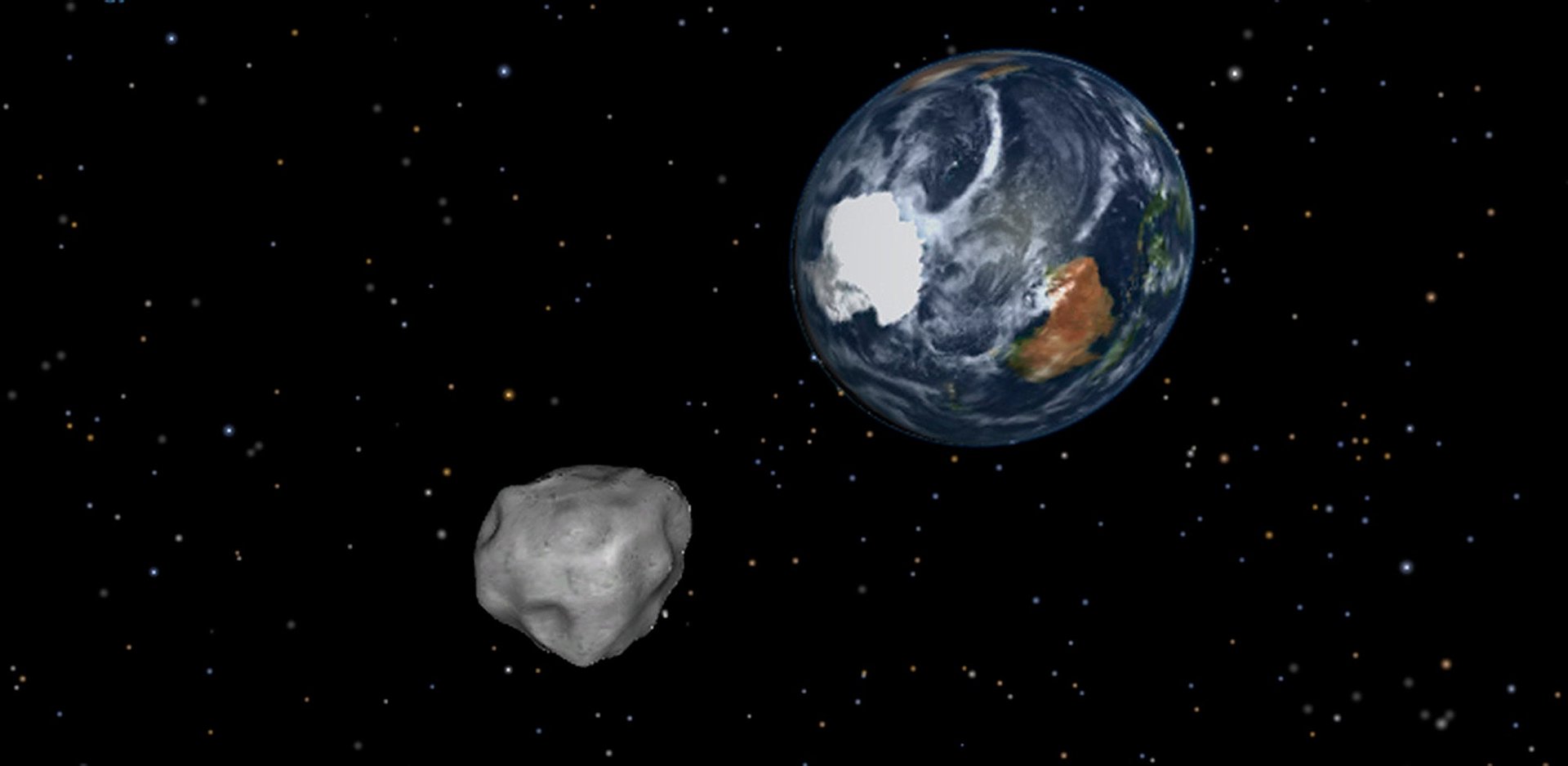What the asteroid skimming past Earth tomorrow could be worth
So you want to build a giant spaceship?

So you want to build a giant spaceship?
That’s the assumption of asteroid-mining consortium Deep Space Industries (DSI), which suggested yesterday that asteroid 2012 DA14, due to pass by Earth tomorrow (Feb. 15), could be worth $195 billion.
If that seems like a lot for a 150-foot (45-meter) lump of rock and ice, that’s because, says DSI, it would only be worth this much—and this is what most news reports glossed over—if its contents were used for building spaceships:
According to DSI experts, if 2012 DA14 contains 5% recoverable water, that alone—in space as rocket fuel—might be worth as much as $65 billion. If 10% of its mass is easily recovered iron, nickel and other metals, that could be worth—in space as building material—an additional $130 billion.
The company obtains these figures by arguing that using the asteroid’s materials in space would save you the cost of getting those same materials off the Earth’s surface and into orbit—which it puts at $10 million per US ton. But this, of course, is predicated on the existence of an orbital construction industry with demand for thousands of tons of water and metal. Tim Worstall of Forbes, who pointed out that absent such an industry, the value of the asteroid is precisely zero, earned himself a huffy riposte from DSI (scroll down to the comments).
And why isn’t there such an industry? A look at the economics of asteroid mining can help here too.
As we calculated before, an asteroid 10 meters wide would fetch just under $9 million as a pure metal hybrid of 90% iron and 10% nickel, which some asteroids are thought to be. (We said $8 million last time, but nickel prices have risen since.) For 2012 DA14, which has just over 90 times the volume, that’s about $820 million of iron and nickel.
This, incidentally, is why asteroid mining for earthbound use is a fantasy: NASA’s planned space probe to bring back just 2kg of asteroid a decade hence will cost $1 billion. But let’s fantasize, and suppose 2012 DA14 were made of pure silver. It would then be worth $48 billion at current market prices. In other words, even a 150-foot, 55,000 ton silver nugget would still be worth only a quarter of what DSI estimates it would cost to get a fraction of that mass, in water and base metals, into space.
And that is why DSI’s claim does make a certain crazy sense. Mining asteroids could, in theory, be a much cheaper way to get that raw material—but only assuming you know someone who wants to build giant spaceships with it.
And so it remains only to note in passing that someone last year proposed a design for the Starship Enterprise, which would cost $1 trillion and weigh 85,000 tonnes including propellant. Going by DSI’s reckoning, that’s just a handful of asteroids’-worth. What are we waiting for?